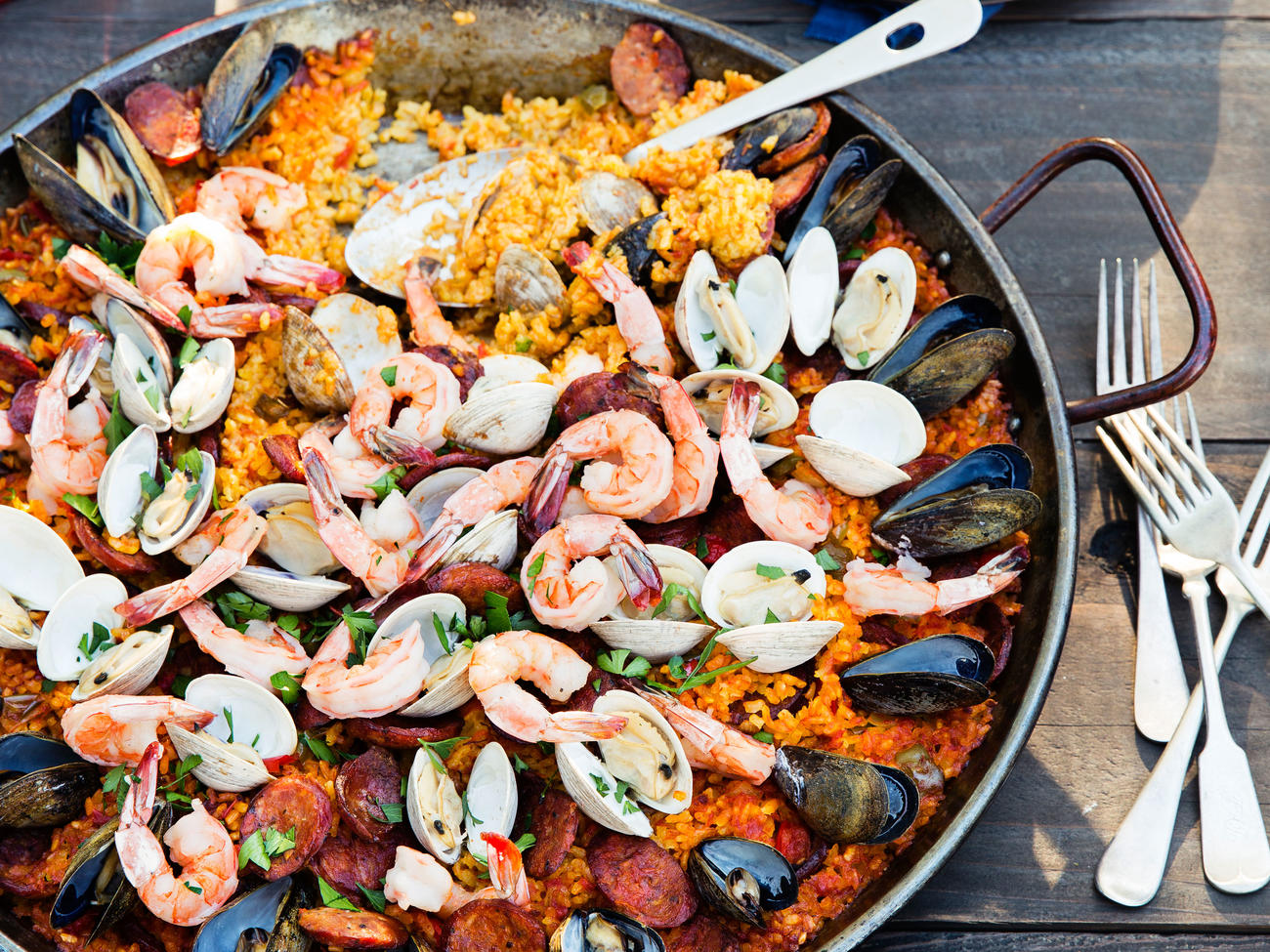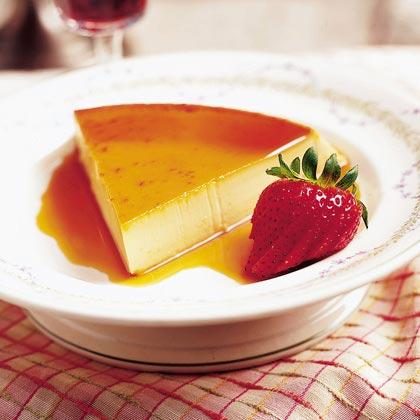
Let’s Throw a Paella Party! Here’s the Menu
Make an authentic Valencian paella on the grill or a quick version on the stove. Take your pick for a lively midsummer meal.

Paella has transcended Spanish borders and earned international fame primarily as an extravagant, saffron-scented rice and seafood dish cooked in a wide, flat pan. But in its native home of Valencia, paella comes in many forms, from rustic versions based on products from the land to showy variations using the bounty of the sea.
David Llodrá grew up eating paella in Alboraya, a small town north of Valencia in a rice-growing region near Albufera Lake. His grandmother made a traditional country-style version, with chicken, rabbit, and beans, over a fire fueled with wood from orange trees. One day, however, having broken her arm, she was unable to cook. Llodrá’s craving prompted initiative: “Just tell me what to do, and I’ll make it,” he pleaded. And a new paella master was born.
Llodrá himself has emigrated from Spain and now lives in Sonoma, California, with his wife, Katherine, and daughter Eden. Here, he has adapted his authentic paella to American ingredients and equipment―charcoal briquets instead of felled and split orange trees, for instance. The natural cycle of a charcoal fire in a kettle barbecue matches the stages of cooking paella: browning the chicken, simmering the broth, and cooking the rice. The even heat also produces a delicious brown crust on the bottom, called socarrat, a highly prized delicacy in a well-made paella. The pans themselves are now easy to find here. California medium-grain rice works just as well as more expensive imported Spanish rice. And, in what also seems like a departure but really isn’t, Llodrá rarely uses expensive saffron. Most Spaniards, he says, actually use a product called colorante, which gives the rice a yellow tinge; we find turmeric a suitable alternative.
Paella cooked as Llodrá does it, on the grill, makes for a leisurely outdoor party. Prepare all the ingredients beforehand, then cook the paella while guests nibble on tapas and watch the proceedings. If you are uncomfortable with an audience in the yard, however, or want a lighter, contemporary seafood paella, choose our simplified stovetop version. Either dish makes a great party centerpiece.
Paella Party Menu
The grilled paella and the seafood version feed five or six people as a main course. If you have a few more guests, offer more substantial tapas (appetizers) and smaller paella servings.
1. Load Up on Tapas
As a build-up to the main course, you’re going to need plenty of Spanish-style snacks, many of which require no recipe at all: olives; roasted, salted almonds; Spanish cheeses such as Cabrales, Manchego, Mahon, and Iberico; thinly sliced serrano ham (or prosciutto); a green salad with onions, tomatoes, and a vinaigrette. Other tapas may require some preparation:
2. Pick Your Paella
3. Sip Something Spanish
Cava (Spanish Sparkling Wine), Red Rioja, or Clarita (equal parts light lager beer and sparkling lemonade).
4. After: Citrus-Scented Port Flan
Serve this with honeydew or watermelon and, of course, espresso.

James Carrier
Pan for It
Paella pans―wide, shallow, two-handled affairs―are becoming more widely available in the United States. Use them as you would a large, wide frying pan. Prices start at about $25 for a 15-inch pan and $30 for a 17-inch pan, but they vary widely. Check specialty cookware or import stores or these sources. (We only recommend things we love. If you buy something through our site, we might earn a commission.)
- Williams Sonoma
- The Spanish Table in Berkeley, California, and Seattle
- Tienda.com
- Buyspain.com sells Spanish paella pans, paella gas burners, saffron, and accessories
